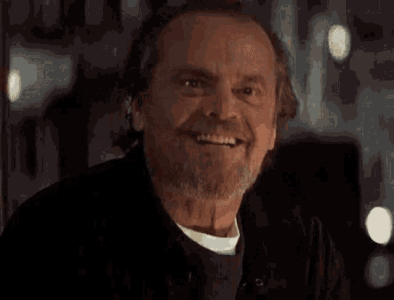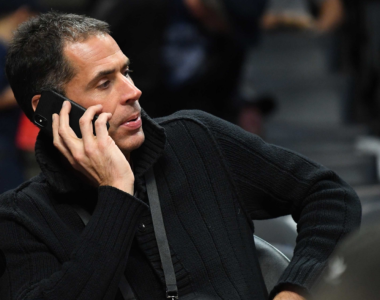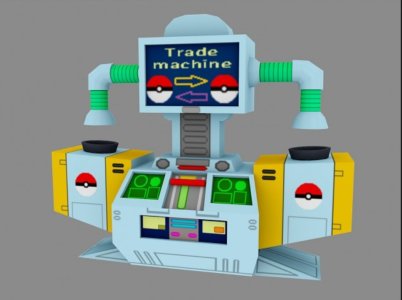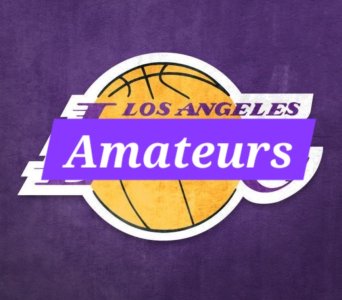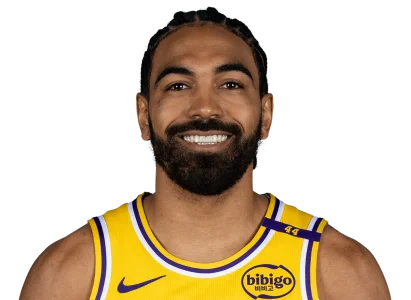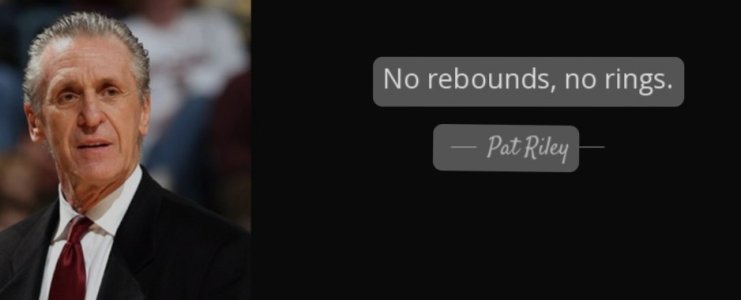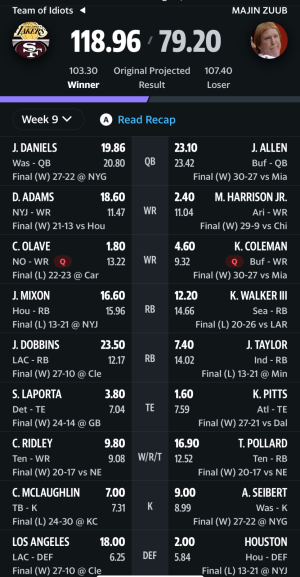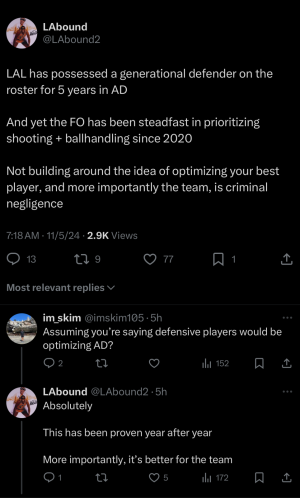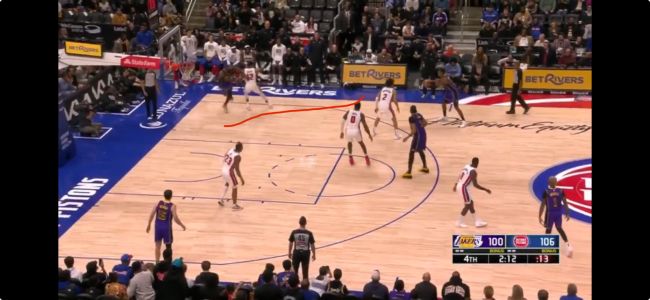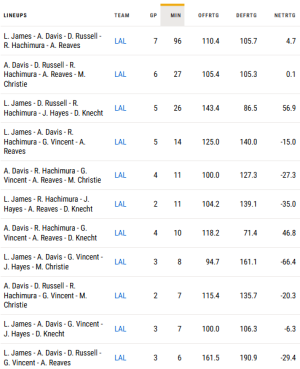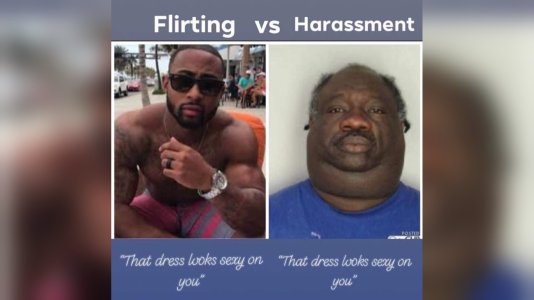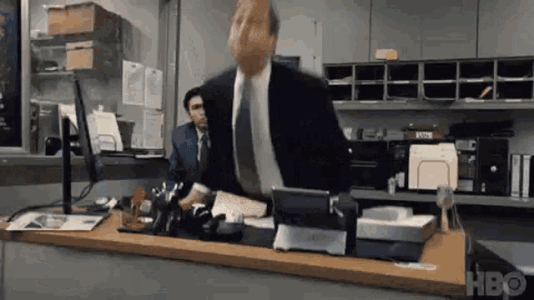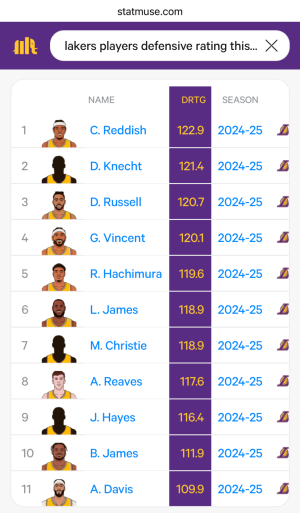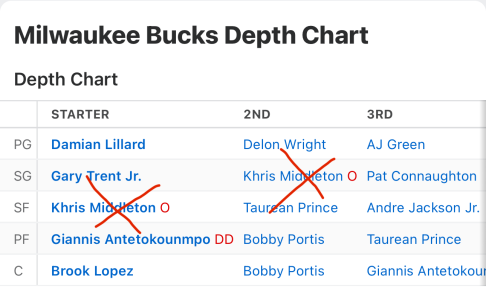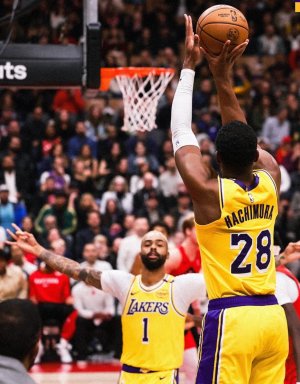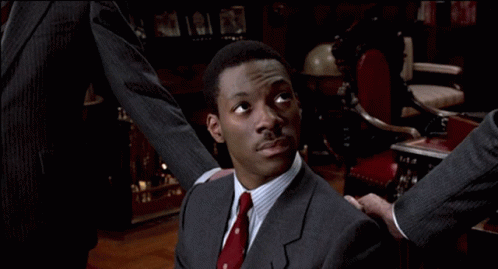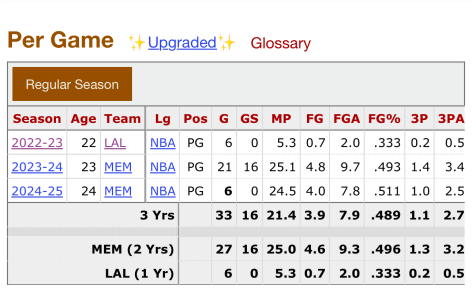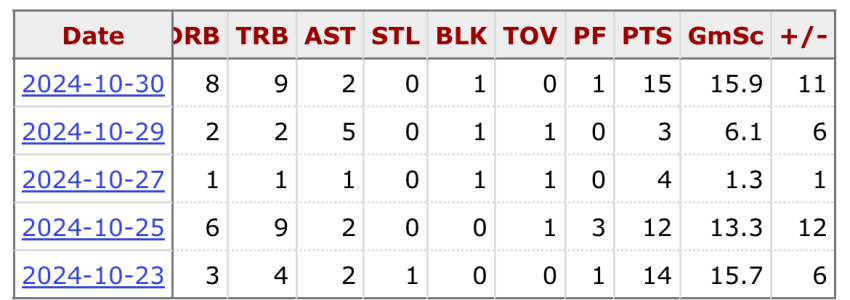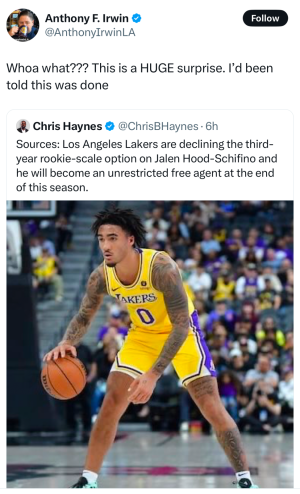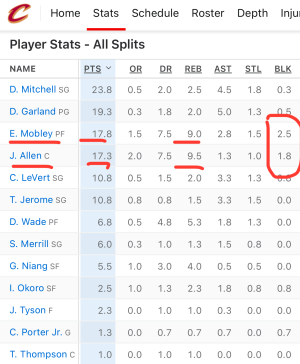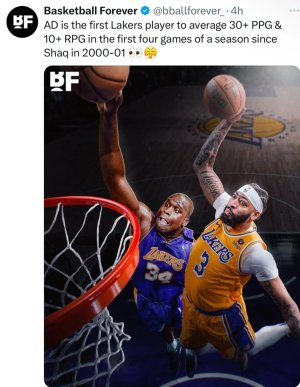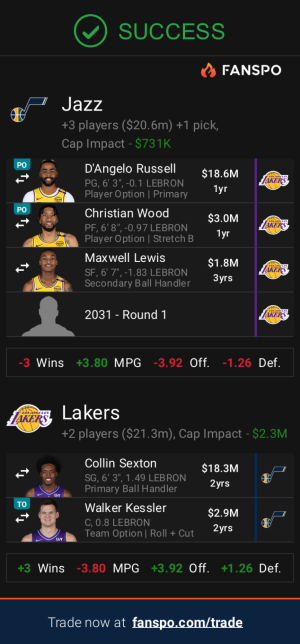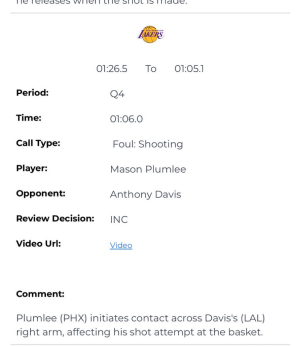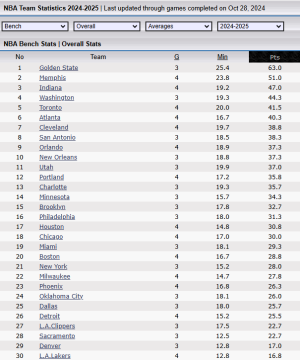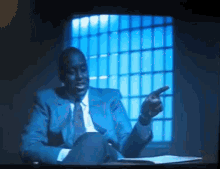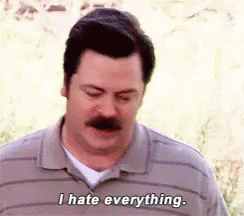Lakers-Warriors series preview: Prediction, X-factors and can L.A. stop Steph Curry?
The Los Angeles Lakers and the Golden State Warriors have recent postseason history. They met in the 2021 Play-In Tournament, with the Lakers prevailing 103-100 to secure the No. 7 seed.
That game came down to the wire, with three lead changes and five ties in the fourth quarter. LeBron James sealed the victory with a 34-foot 3-pointer from the right wing, one minute after Draymond Green poked him in the eye. James said afterward he saw three rims and tried to shoot in the middle of the blur.
A lot has changed since then. The Warriors won the championship in 2022, regaining the magic that made their run from 2015 through 2019 so enjoyable. They weren’t the same team this season, especially on the road (11-30 record). But they’ve turned that around this postseason, winning Games 5 and 7 in Sacramento to win their first-round series with the upstart Kings.
The Lakers, meanwhile, lost to the Suns in the first round in 2021 after an Anthony Davis groin injury in Game 4. Then they endured a failed Russell Westbrook experiment, missing the playoffs in 2022. They were also slated to be outside of the Play-In Tournament this season until after the Feb. 9 trade deadline, when they traded Westbrook and revamped the roster.
Now, Los Angeles enters the series as perhaps the hottest team in the NBA, winning 14 of its previous 18 contests and dispatching of the second-seeded Memphis Grizzlies in six games. James and Davis have yet to lose a playoff series in which they’re both healthy. How healthy they each are, though, remains the primary issue for the Lakers in this series and, potentially, beyond.
James and Stephen Curry — as well as Green, Klay Thompson, Kevon Looney and Andre Iguodala — have an extensive history dating back nearly a decade. Though James’ Cavaliers and the Warriors last met in the NBA Finals in 2018, there are still remnants from those four straight finals battles. The dynamic has certainly cooled, with James and Green becoming close friends, and James, Curry and Green even posing for a photo at Green’s wedding this past summer. But for James, in particular, beating the Warriors means something extra. In this series, there are basically 12 Dillon Brookses on the other side.
Th Lakers and Warriors have been on each other’s turf, to some extent, for years. A series between the two has felt inevitable. Golden State has been the glamour franchise of the past decade, having stolen some of Los Angeles’ juice as the league’s most marketable team. James and Curry are the two preeminent stars of the past decade (and longer). They aren’t just battling each other — Curry holds a 3-1 edge head-to-head in the playoffs — but they’re battling to cement their place in the NBA pantheon. This is the league’s dream playoff series.
So let’s dive in.
Series schedule
Here are the statistical profiles of the two teams:
The big Lakers question: Can they hinder Curry?
Fresh off his NBA-record 50-point-performance in Game 7, Curry is obviously atop the Lakers’ defensive game plan. But let’s zoom out for a moment.
The most interesting part of this series is going to be the Lakers’ defense versus the Warriors’ offense. Defending Golden State is a stylistic 180 for Los Angeles after matching up against Memphis for six consecutive games. Golden State’s movement, passing, screening and shooting are eons better than Memphis’. It’s going to make for a considerable adjustment for the Lakers in the first couple of quarters, if not games.
With Curry specifically, the Lakers will mix up their looks. Jarred Vanderbilt, Austin Reaves and Dennis Schröder will each spend time as his primary matchup. But defending Curry is a five-person effort. Each defender has to be aware of his whereabouts on the floor at all times. A sliver of space — and sometimes even less — is all Curry needs to kill you. The Lakers are going to have to alter their drop defense, with their bigs playing higher up and closer to the level of the screen. They might occasionally blitz or trap, but that triggers four-on-three scenarios the Warriors have dominated for years.
Curry never stops moving, which will be an issue for the Lakers — as it is for most opponents. Watch here as he pushes off Green, uses Iguodala as a screener off and on the ball, fakes a drive and steps back into a tough, contested 3-pointer with Schröder draped all over him.
When teams start to overplay Curry for his shot, he’ll surprise them and cut backdoor if he senses a defense is unsuspecting. This basket is far too easy. Golden State will catch Los Angeles sleeping if the Lakers are unprepared.
Each potential Lakers defender on Curry has certain strengths. Vanderbilt is long and athletic, capable of disrupting Curry’s shot creation. Schröder is best at the point of attack. Reaves is most effective chasing Curry around screens and off-ball actions.
Davis will start on Looney, while James will likely guard Green so he can roam. They’ll both sag off the Warriors’ bigs and hang back in the paint, while being mindful of the Warriors’ many counters to exploit that initial coverage. The other three matchups will depend on how the Lakers prioritize Curry, Andrew Wiggins and Thompson. The guess here is the Lakers will start with Vanderbilt on Curry, Reaves on Thompson and D’Angelo Russell on Wiggins.
The Lakers are great at defending the paint because of Davis’ defensive brilliance, James’ help instincts and the collective length and physicality of players like Vanderbilt and Rui Hachimura. They’re not as effective in limiting 3s. While the Lakers allowed the second-lowest opponent 3-point percentage this season, there is some noise in that stat, with shooting luck playing a factor. The potentially more important stats for this series: The Lakers allowed the 10th-most opponent 3-pointers made and sixth-most opponent 3-pointers attempted per game.
Conversely, the Warriors ranked first in 3-pointers made and attempted and second in percentage. The Warriors’ propensity for generating 3s — led by Curry — and the Lakers’ vulnerability in giving them up could be a swing factor, especially when factoring in that the Lakers don’t have nearly the same level of 3-point firepower, nor do they take as many.
With Curry, it’s not just about his points, his 3s, even his assists. It’s about the chain reaction of his presence. The threat of Curry’s shooting bends a defense until it breaks. Then, the Warriors capitalize with layups, cuts and open catch-and-shoot 3s.
It’s impossible to stop Curry, but the Lakers have the personnel to somewhat slow him down. If they can do so four times in seven games, they’ll have a reasonable chance to win the series. If not, the Lakers could find themselves in shootouts they’re incapable of winning.
The big Warriors question: Can Looney and Green handle Davis one-on-one?
In Looney and Green, the Warriors have two defenders they’ll feel comfortable using to hang with Davis one-on-one in the post and in isolations. Golden State will show Davis a crowd on the backline, with two or three defenders ready in the paint in case he drives. But Looney and Green, like Xavier Tillman in the Grizzlies series, have low centers of gravity and strong base to bang with Davis.
Davis went off for 39 points in the most recent matchup, hitting 14 of his 25 shots with James sidelined due to injury. But the Warriors limited Davis to a combined 25 points on 8-of-24 shooting in the two other matchups after the trade deadline, with Green and Looney both disrupting him at times.
Golden State tends to turn Davis into a jump shooter. In their four matchups, the Warriors limited him to 40 percent shooting in the paint outside of the restricted area and 33.3 percent on midrange jumpers (Davis shot 46.2 percent and 40.6 percent from those ranges, respectively, in the regular season).
Green has historically been the best Davis defender in the NBA, though Davis scored 24 points on 9-for-19 shooting (47.4 percent) in this regular season, according to NBA.com. Looney was technically the more effective defender in the 2022-23 regular season, limiting Davis to 35 points on 14-of-32 shooting (43.8 percent), per NBA.com.
On this play, Looney subtly pushes Davis away from his initial post position, crowds him and forces him into a fadeaway long 2 miss. Davis can make that shot, and he did several times against the Warriors, but it’s a win for Golden State’s defense every time he takes it. He needs to be assertive and apply pressure on the rim against them.
The most impressive moment in that last matchup was Davis putting his head down and driving past Green, ultimately scoring over the top of him. That must be Davis’ path to success. The Lakers need him to attack Green aggressively.
Davis can shoot over the top of Green and Looney, since he has the size advantage over either. He was at his best in the regular season matchups when finishing in the pick-and-roll and when he had space to face up and take them off the dribble.
Davis can’t be passive, as he was during the matchup on Feb. 23. In that game, he only attempted five shots, his fewest in a game this season. With James seemingly still not at 100 percent after his foot injury, the Lakers will need Davis to be even better and more consistent offensively than he was against Memphis. A dominant Davis could make this a short series in Los Angeles’ favor.
Lakers’ X-factor: D’Angelo Russell
There isn’t a clear player for Russell to guard in this series. He shouldn’t defend Curry — at least not with Vanderbilt, Reaves and Schröder available. Thompson and Wiggins are big and strong enough to post Russell up and simply turn and shoot over him, even if that outcome is better than some of the alternatives with the Warriors offense. Matching Russell up with Looney or Green would allow the Lakers to be nimble in dribble-handoff actions, switching Russell onto Curry, Thompson and Jordan Poole in a pinch, but those two bigs would obliterate Russell on the offense glass.
Russell will likely start against Thompson or Wiggins, depending on which Warrior second option the Lakers fear more. (As noted above, the guess here is Reaves will probably start against Thompson, putting Russell on Wiggins.) That will open up the Warriors to target Russell with screens, post-ups and off-ball actions. Golden State has a track record of playing defensive liabilities off of the floor. Russell isn’t quite at that level — he’s held up fairly well in the Lakers’ elite defensive infrastructure — but he can certainly be exploited, especially by the Warriors’ perimeter trio.
On the other end, Russell is the Lakers’ streakiest shooter. When he’s hot, his ceiling is high, as he showed in Game 6 against the Grizzlies. In the case that one of these games turns into a shootout, the Lakers are going to need Russell to match Curry or Thompson, if only briefly. The Lakers are going to need Russell locked in defensively to keep himself on the floor and bolster their offense. If he’s unplayable, that shifts pressure onto either Reaves or Schröder to provide more offensively than they typically do.
This is the type of series that will go a long way in determining Russell’s next contract and value in free agency.
Warriors’ X-factor: Kevon Looney
Looney is going to be a problem in this series. His offensive rebounding, screening and dribble-handoff capabilities are key ingredients to the Warriors’ offensive attack.
He’s often an afterthought for opposing defenses — teams have to give something up — which he uses to his advantage. It’s demoralizing to play 20 seconds of stellar defense, force a Warriors miss and watch as Looney corrals an offensive board to kick out to Curry, Thompson or Poole for an uncontested 3 that swings the momentum of a game.
Looney just had three 20-rebound games in the Kings series. If Davis is rotating to put out fires on the perimeter, Looney will feast on the interior and make the Lakers pay for leaving him. The Lakers’ guards and wings have their work cut out for them wrestling Looney inside.
Series X-factor: Transition battle
For the second straight series, the transition game will go a long way in determining the winner.
The Warriors have a much better offense than the Lakers do. They have better shooting and ball movement. They have more firepower. But one of their few weaknesses is their longstanding proclivity for turnovers. Golden State ranked 29th in turnover percentage in the regular season. The Lakers need to exploit that. The problem, however, is that Los Angeles ranked 29th in opponent turnover percentage this season and only jumped up to 27th after the trade deadline.
Both teams like to play fast, ranking in the top four in pace in the regular season. But that doesn’t always translate to transition play in the playoffs. The Lakers were fourth in the regular season in fast-break points and are first in the postseason. The Warriors were 13th in the regular season and are 15th in the playoffs.
One major difference between the Warriors and Grizzlies is Golden State’s tendency to shoot 3s in transition. On this play, Curry leads a three-on-two fast break and sprays out to the left corner, where reserve guard Donte DiVincenzo finds him for a triple as Curry and his teammates turn away with the ball still in the air.
The Lakers need to find a way to negate the Warriors’ half-court advantage by generating easier looks off misses and turnovers. If the transition points are close to even, or in Golden State’s favor, the Lakers might not be able to score enough consistently.
Additional questions
• How do James and Davis hold up under the stress of an every-other-day series?
• More specifically, how healthy is James? Does he look spryer?
• How similar is Los Angeles’ rotation to the last series? Do the Lakers stick with eight players? Nine?
• Can they survive the non-Davis minutes with a smaller group? Or is Wenyen Gabriel more important again?
• Warriors coach Steve Kerr is known for his adjustments: ignoring non-shooters, making starting lineup and rotation changes, etc. What does he have up his sleeve? And can Lakers coach Darvin Ham effectively counter?
• Who’s the random role player — likely one on each side — who ends up swinging a game?
• The Warriors are 16th in third-quarter net rating. The Lakers are 22nd. But Golden State is historically known for its third-quarter avalanches, as the Kings found out in Sunday’s Game 7. Meanwhile, Los Angeles has been susceptible to slow performances after halftime. How does that play out?
• Can the Warriors play Vanderbilt off the floor?
• Can the Lakers force Golden State to downsize and use one big? Or does their interior play make them stay big, limiting their offensive spacing?
• Who does Mychal Thompson, former Laker and current team radio broadcaster, as well as Klay’s father, want to win the series?
• Who gets the last laugh: Lakers Twitter vs. Warriors Twitter?
Prediction
The Lakers won the season series 3-1, with all three of their wins coming after the trade deadline with their current group. But James missed two games. Curry and Wiggins missed two games. The Lakers’ new core wasn’t available in the first matchup. That alters the dynamic of those matchups, to some extent.
Unlike the last round, the Lakers don’t enter this series with the best player on the floor. James and Davis can each be the best player on a given night, or for the entirety of the series. But Curry is that guy until proven otherwise, based on his 2022-23 regular season and dominant opening-round performance vs. Sacramento.
As ridiculous as it sounds, there is a lot on the line in the James-Curry rivalry. As noted above, Curry holds the playoff edge 3-1. (One could say 3-2, depending on how the Play-In Tournament is counted.) But Curry also had a clear advantage in each of his three series wins. In 2015, Kevin Love and Kyrie Irving sat out for all but one game. In 2017 and 2018, he had Kevin Durant as a teammate, making the Warriors nearly unbeatable when healthy. Nonetheless, a fourth win for Curry bolsters his all-time standing, while a James win renders his 2-3 deficit less substantial – even with one series victory coming outside of the NBA Finals. When two top-12, if not top-10 players of all time are facing off, the victor matters.
After the trade deadline, these two teams were basically neck and neck in terms of net rating (the Warriors were plus-5.0 and the Lakers were plus-4.

. The Lakers have the better defense. The Warriors have the better offense. In the small sample size of the first round, the offensive gap has narrowed and the defensive gap has widened, though that is mostly due to the teams’ respective first-round opponents. For as much of an adjustment as this will be for the Lakers going from the Grizzlies to the Warriors, the Warriors must deal with similar sticker shock in going from the fast-paced Sacramento Kings to the bigger Lakers.
The Warriors enter the series as favorites, but the Lakers are going to challenge them physically in ways the Kings could not. L.A. has two superstars with postseason pedigrees and previous success in the playoffs against the Warriors. James knows them as well as anyone. This series is a coin flip and feels more likely than not to go seven games.
But the Lakers were better in the head-to-head matchups, have posted the better record since the trade deadline and have two of the series’ three best players, even if they’re probably second and third. Despite lacking home-court advantage, the Lakers should have the slightest of edges.
Lakers in seven.





 . The Lakers have the better defense. The Warriors have the better offense. In the small sample size of the first round, the offensive gap has narrowed and the defensive gap has widened, though that is mostly due to the teams’ respective first-round opponents. For as much of an adjustment as this will be for the Lakers going from the Grizzlies to the Warriors, the Warriors must deal with similar sticker shock in going from the fast-paced Sacramento Kings to the bigger Lakers.
. The Lakers have the better defense. The Warriors have the better offense. In the small sample size of the first round, the offensive gap has narrowed and the defensive gap has widened, though that is mostly due to the teams’ respective first-round opponents. For as much of an adjustment as this will be for the Lakers going from the Grizzlies to the Warriors, the Warriors must deal with similar sticker shock in going from the fast-paced Sacramento Kings to the bigger Lakers.




